Understanding Facial Image using Deep Convolutional Neural Network
Facial image analysis has been used in various scenarios such as face detection on the digital cameras or smartphones, face recognition for security system and age estimation for marketing. Challenges in facial expression and pose have been important problems for facial image analysis in the computer vision. To tackle these problems, it is necessary hand-crafted feature that based on the knowledge of researchers. We have applied a Deep Convolutional Neural Network(DCNN) that automatically designs and trains efficient features to address these problems and achieve robust facial image analysis.
Facial Point Detection Based on a DCNN with Optimal Mini-batch Procedure
Facial point detection is an important pre-processing task in facial image processing. We have achieved high performance facial point detection using a DCNN. However, it is still unclear how to adjust parameters and way to select training samples in the DCNN learning process. Therefore, it is not easy to obtain adequately accurate facial point detection with a DCNN. Accordingly, we studied a way to input training samples by comparing four mini-batch procedures.
Experiment results showed that augmentation mini-batch, in which training samples are expanded by data augmentation, provided the best performance in terms of robust facial expression and direction. We also found our DCNN-based facial point detection method can achieve up to 24% higher accuracy than the conventional Conditional Regression Forests. In terms of speed it can process a single facial image in 10 ms on a 3.4GHz CPU.
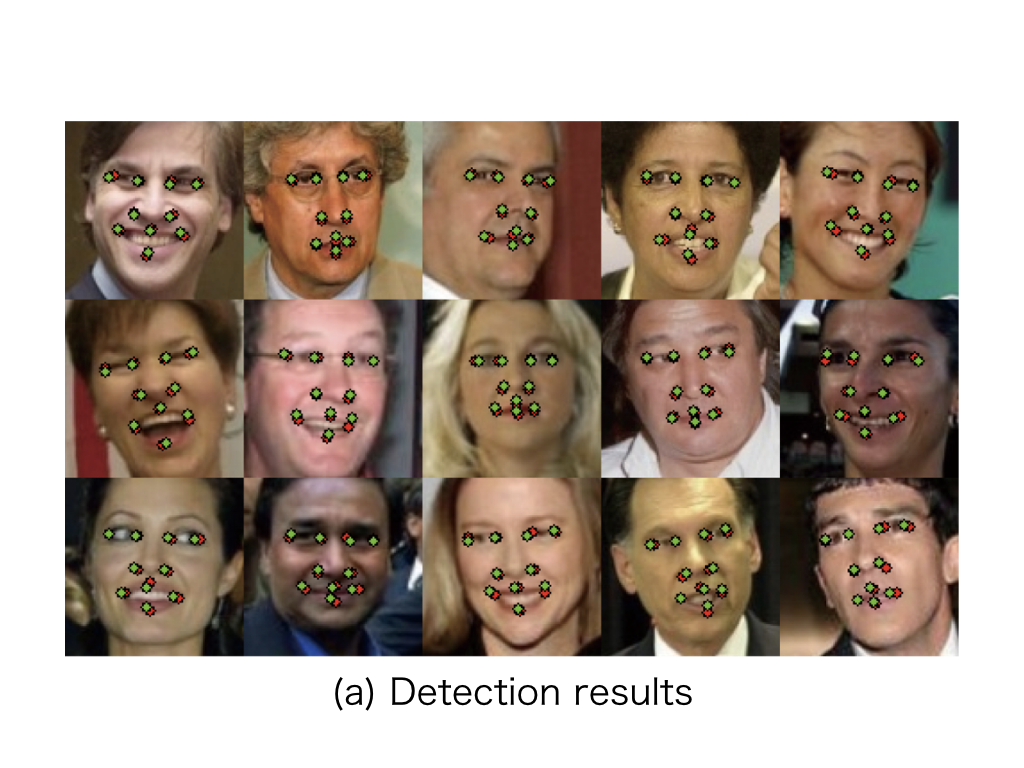
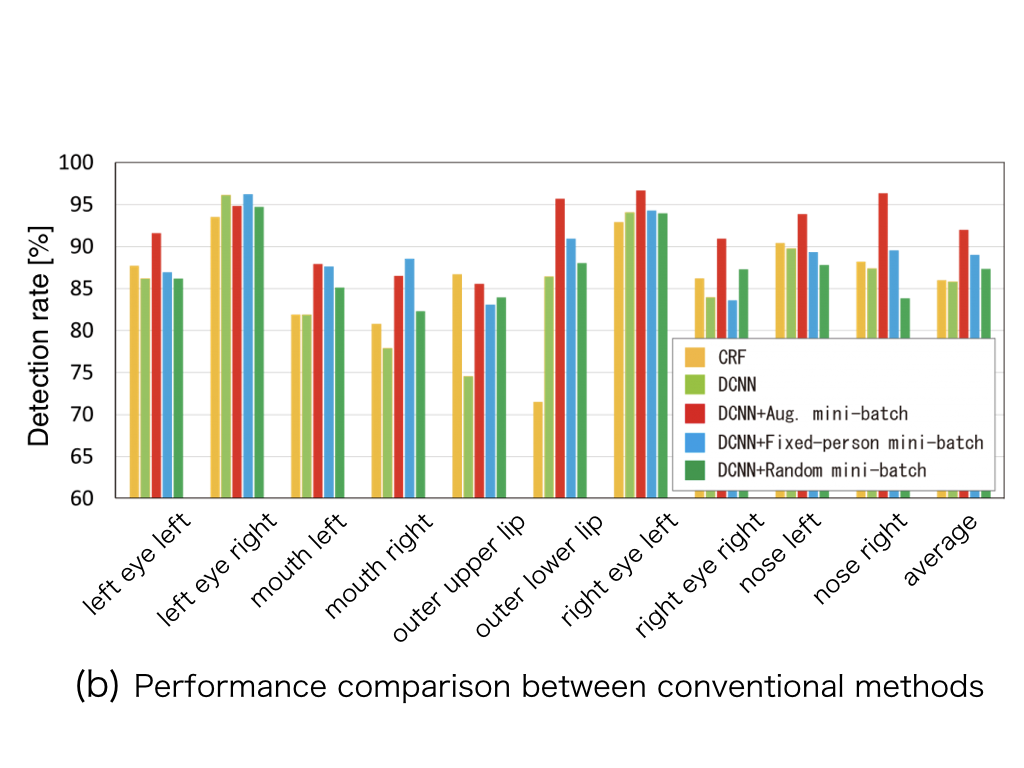
Cost-Alleviative Learning for Deep Convolutional Neural Network-based Facial Part Labeling
Facial image segmentation is one of the most effective recognition tasks in understanding the facial structures. To understand fine-grained facial structures, we annotated a facial image segmentation dataset that includes eight annotated labels such as eye, nose, mouth, sunglasses, hat, hair, skin and background. It is based on the Labeled Face in the Wild Dataset, which includes 13,233 facial images. This dataset is available at here(207.5MB) for non-commercial purpose. Please refer “Cost-Alleviative Learning for Deep Convolutional Neural Network-based Facial Part Labeling”.

It is difficult for a conventional DCNN to recognize small regions such as the eye. To address this problem, we proposed Cost-Alleviative Learning, in which training errors are weighted when they are calculated in the training process. Experiment results showed that when we set the weight to 0.8 for the eye error function, our approach outperformed the conventional DCNN. In particular, 20 % improvement in accuracy was obtained for the eye region.
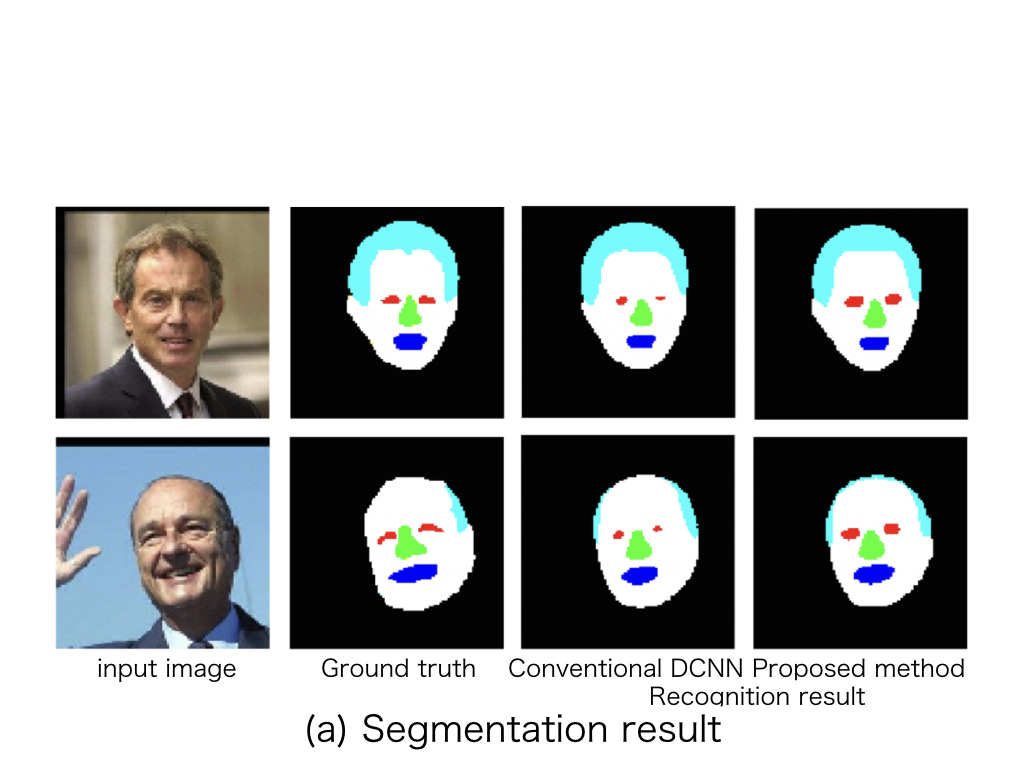
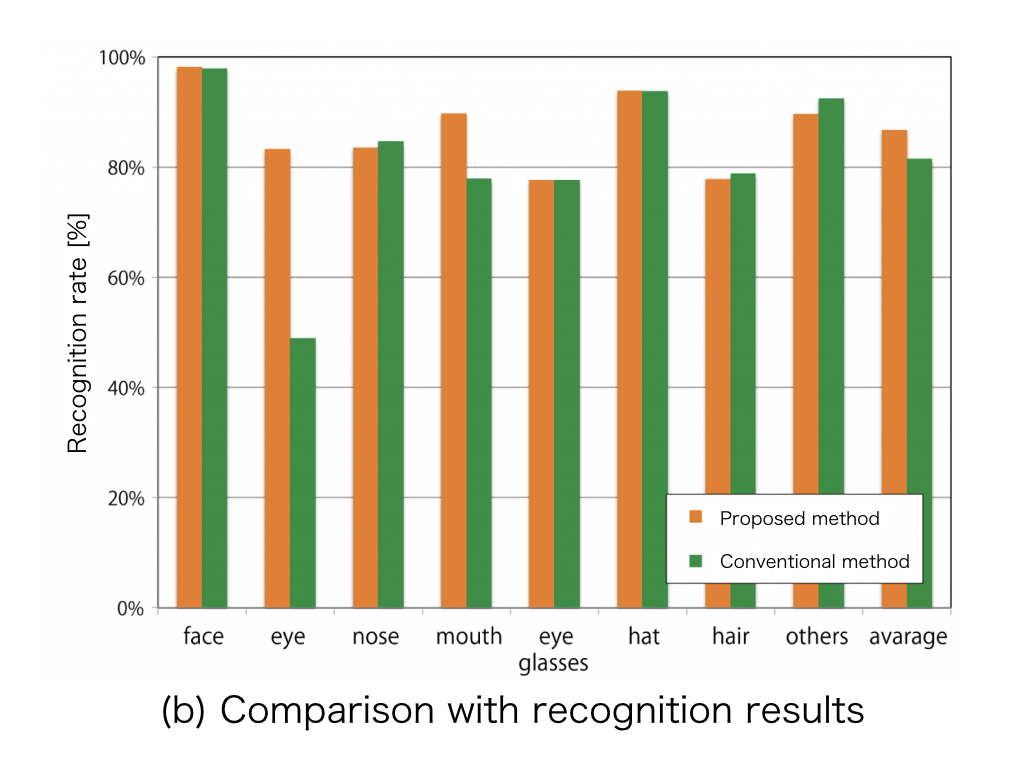
Estimation of Dementia Level using Deep Convolutional Neural Networks
The number of dementias cases Japan is increasing every year, and only a doctor can diagnose dementia. Therefore, we proposed an engineering approach for automatically diagnosing dementia level on the basis of C-Face.D, a criterion to determine dementia level. Our approach estimates dementia level with high accuracy through the use of a DCNN. We further improved the accuracy by adding a facial point detection task to the training process.
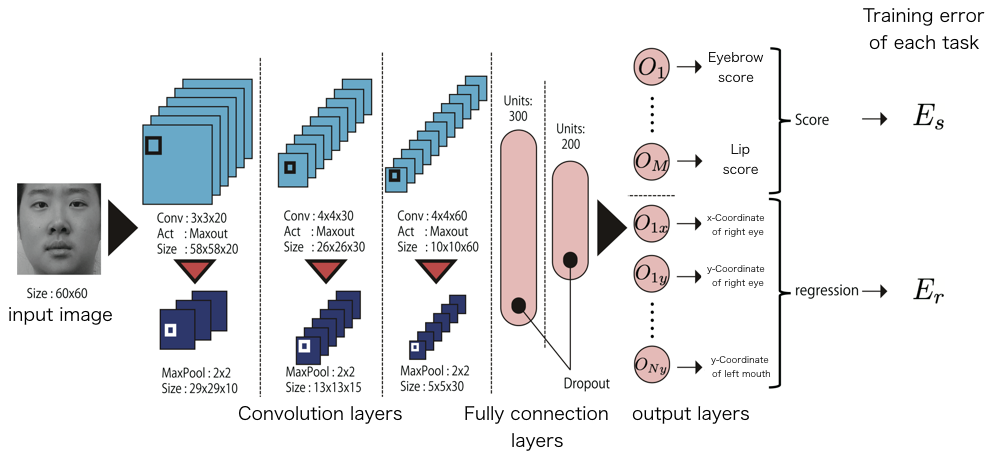
Heterogeneous Learning for Facial Points and Gender and Age Estimations
Information services using gender or age estimations have been continually spreading in recent year. Performing recognition or estimation for multiple tasks requires the construction of classifiers corresponding to each task. However, this is time-consuming during training and testing, and the computation time increases with the number of tasks. One of the methods developed to address this problem is heterogeneous learning, which performs multiple tasks in a single network. We employ heterogeneous learning in a simple DCNN that enables gender, age and facial points to be recognized at the same time. Experiment result showed our DCNN can recognize multiple tasks for various faces at a speed of 4 fps on a 3.4 GHz CPU.
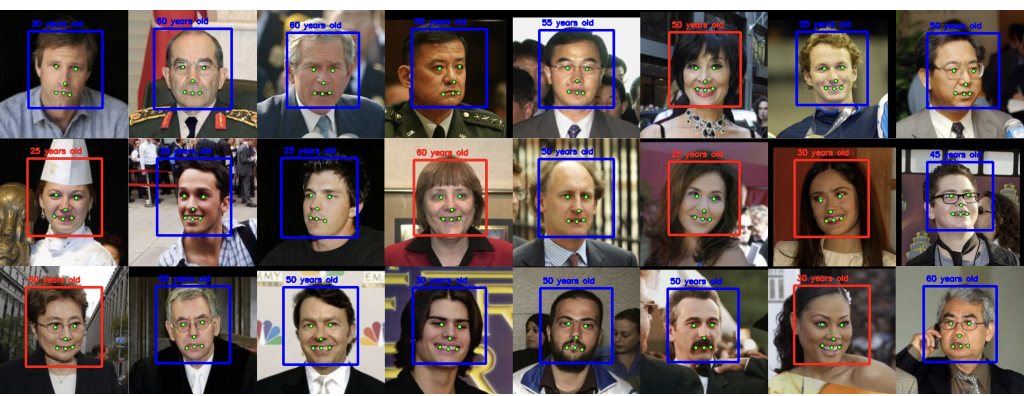
Weighted Heterogeneous Multi-task Learning for Multiple Facial Attributes Recognition
Heterogeneous learning can recognize multiple tasks using a single DCNN. However, differences between training errors negatively affect the training process in specific tasks. To suppress differences for multiple tasks, we propose weighted heterogeneous learning that has a weighted error function for the DCNN. Our approach suppresses the training errors by weighting the cost function for the subtasks. Our weighted heterogeneous learning approach using a DCNN stabilizes training and ensures accurate recognition task performance.
